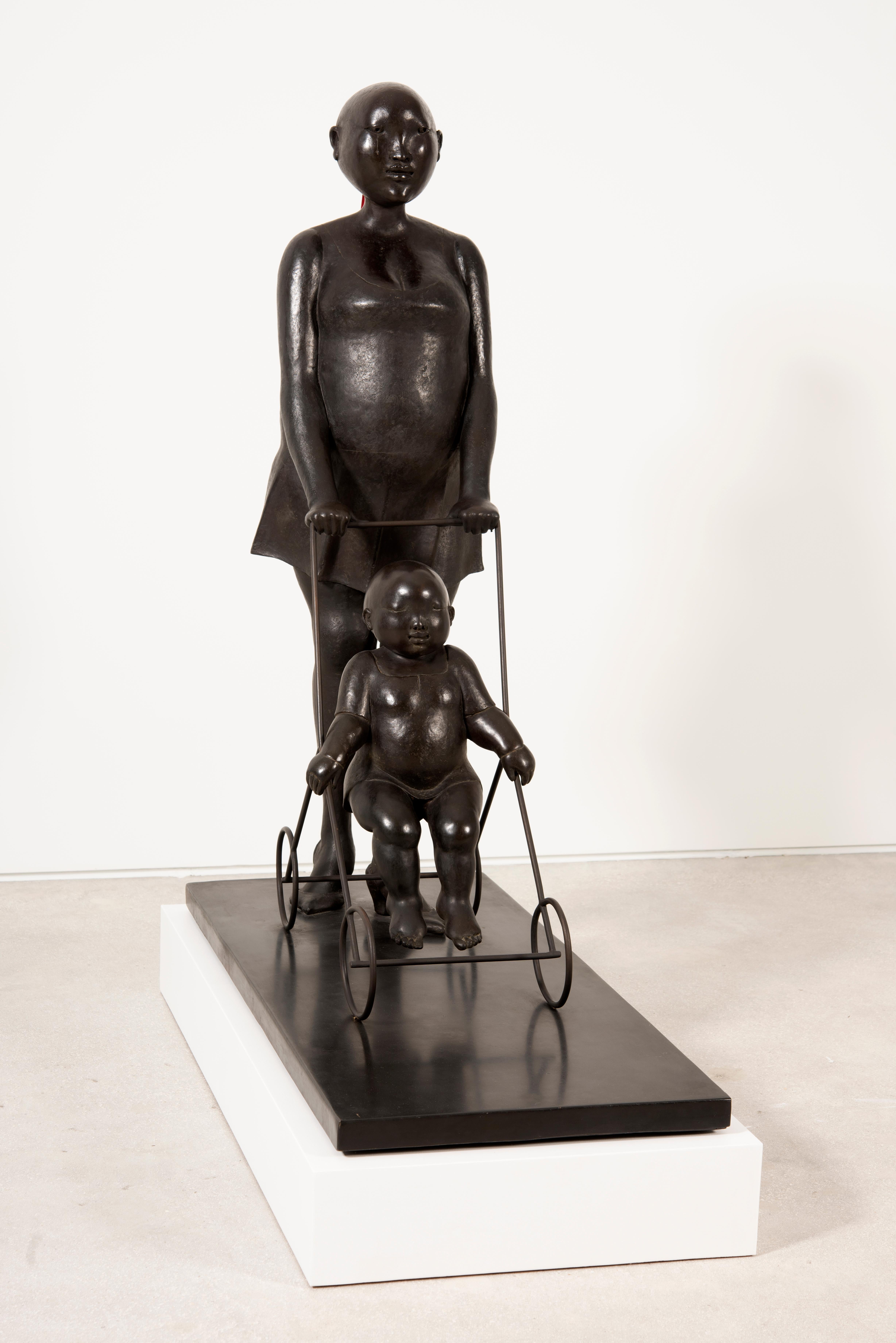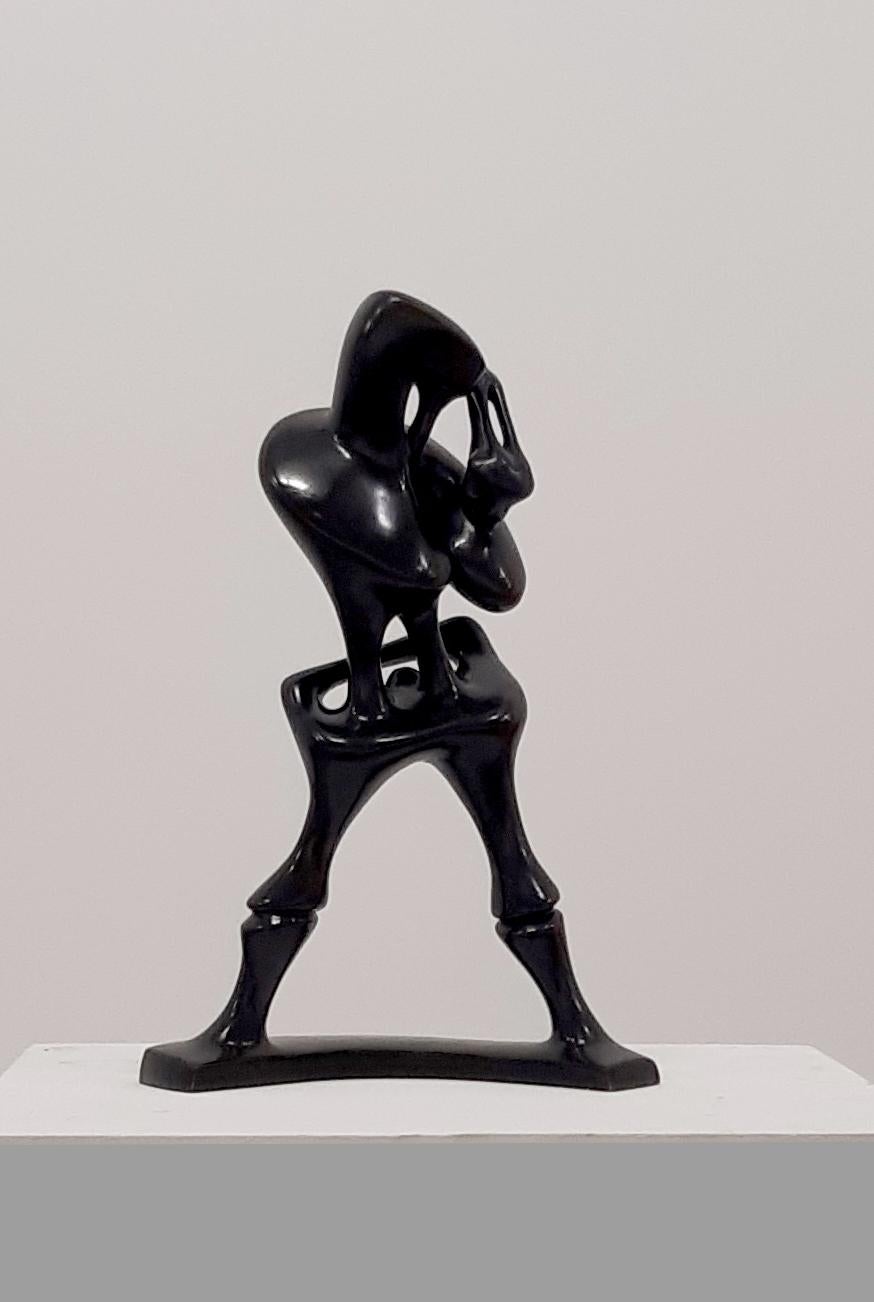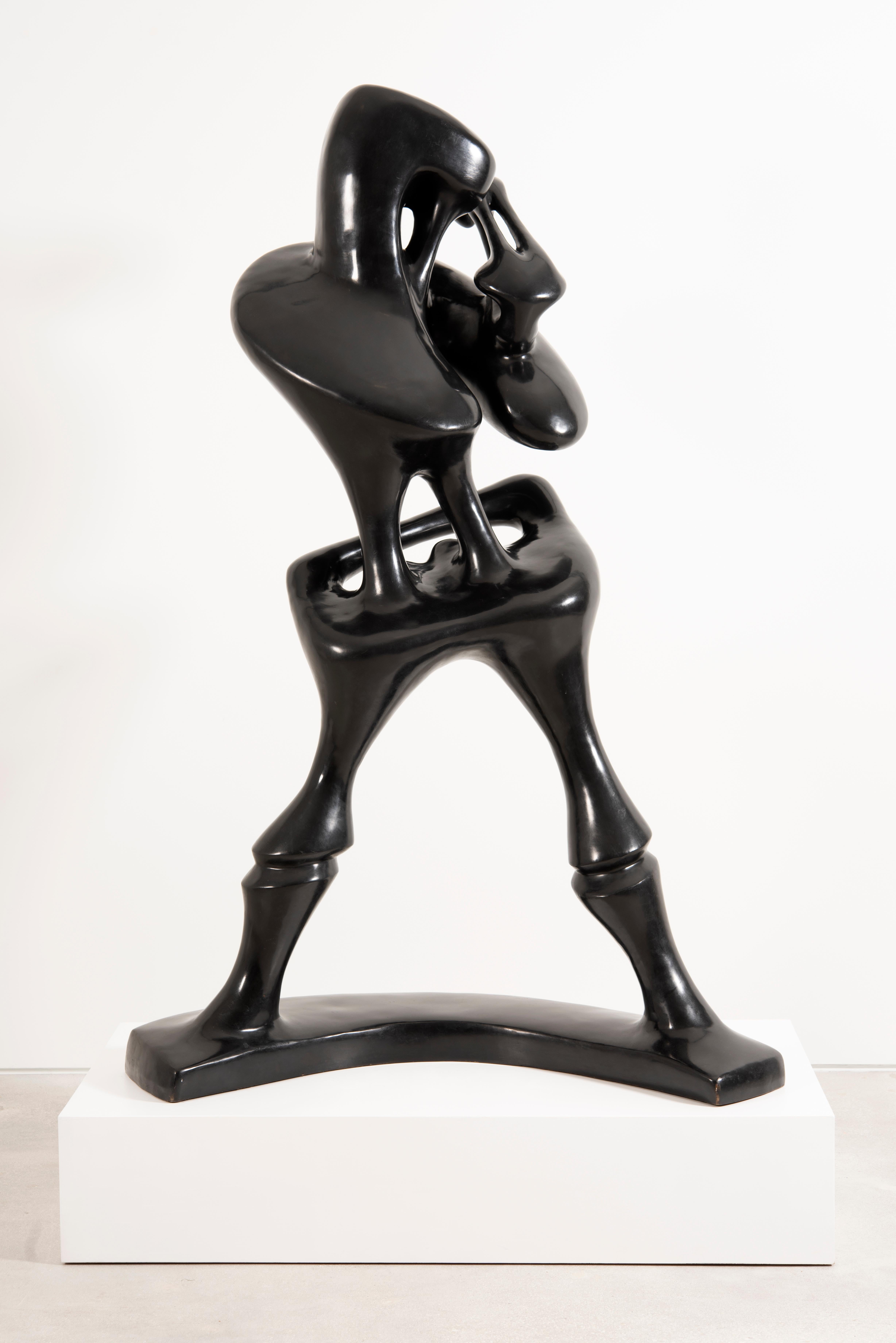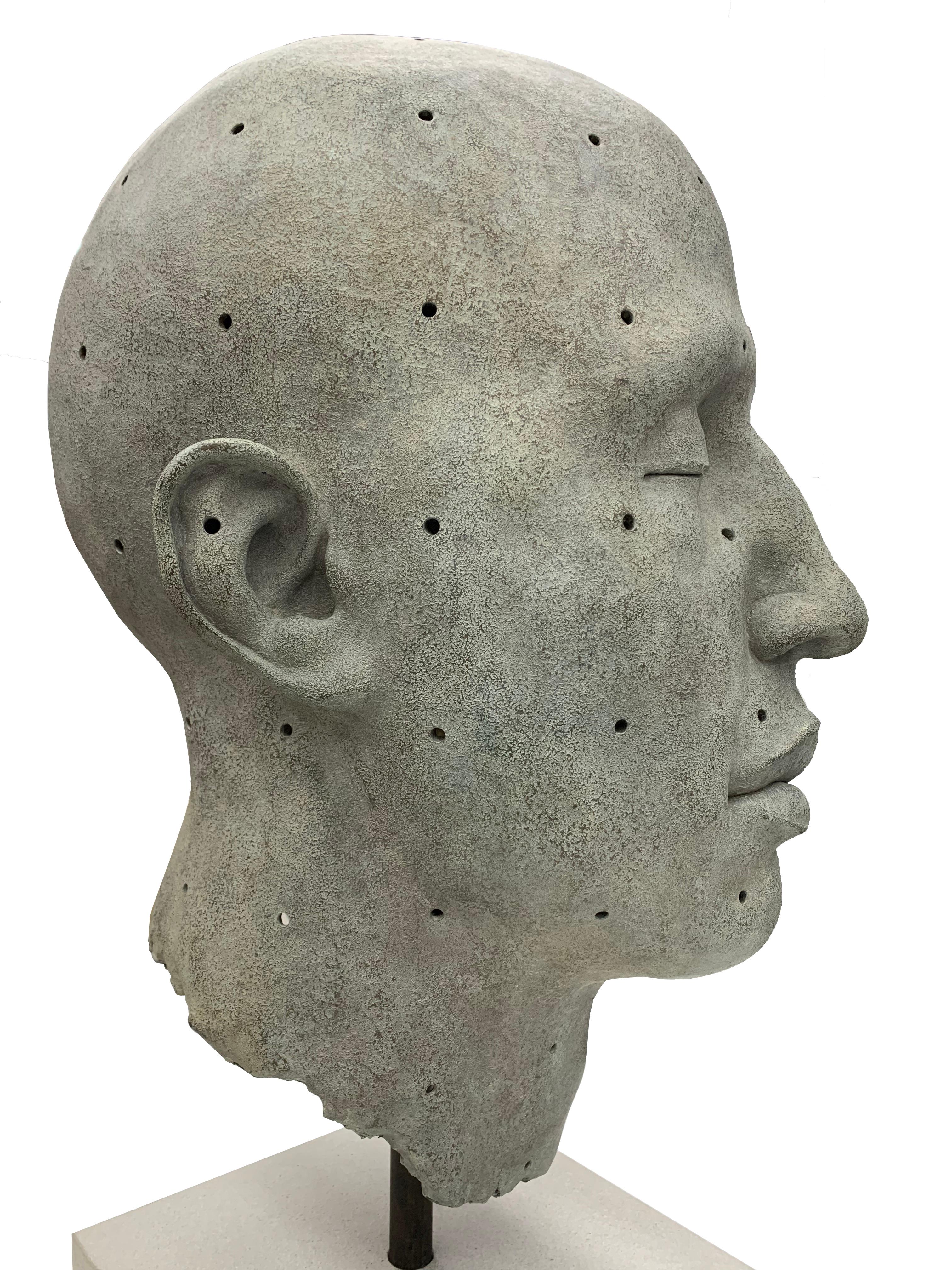Items Similar to "Charles Lindbergh Book Ends, " Cast Bronze created in 1929 by an Unknown Artist
Want more images or videos?
Request additional images or videos from the seller
1 of 5
Unknown"Charles Lindbergh Book Ends, " Cast Bronze created in 1929 by an Unknown Artist1929
1929
About the Item
These cast bronze book ends were created by an unknown artist. They depict the American aviator, military officer, author, inventor, explorer, and environmental activist, Charles Lindbergh.
Dimensions: 5 1/2" x 5" x 1 3/4"
- Creation Year:1929
- Dimensions:Height: 5.5 in (13.97 cm)Width: 5 in (12.7 cm)Depth: 1.75 in (4.45 cm)
- Medium:
- Period:
- Condition:
- Gallery Location:Milwaukee, WI
- Reference Number:
About the Seller
4.9
Platinum Seller
These expertly vetted sellers are 1stDibs' most experienced sellers and are rated highest by our customers.
Established in 1966
1stDibs seller since 2017
391 sales on 1stDibs
Typical response time: 1 hour
- ShippingRetrieving quote...Ships From: Milwaukee, WI
- Return PolicyA return for this item may be initiated within 14 days of delivery.
More From This SellerView All
- "Sea Wind, " Bronze Portrait Sculpture signed by Judye FrankowiakBy Judye FrankowiakLocated in Milwaukee, WI"Sea Wind" is an original bronze sculpture by Judye Frankowiak. The artist signed the piece. It depicts a woman with wind-swept hair. It is number 8 from an edition of 10. 8 1/2" x 6" x 7" art B.A. Michigan State University, East Lansing, Michigan Further study: Newark State College, Elizabeth N.J.: Education Summit Art Center, Summit, N.J.: Sculpture 1970-1978: Milwaukee Public Museum, Milwaukee, WI. Worked under contract in Exhibits and Graphics Dept. to create life-size human figures for exhibits and dioramas 1970 to Present: Provided exhibit and diorama sculpture...Category
1970s Other Art Style Figurative Sculptures
MaterialsBronze
- "Cover Jar w/ 2 Birds, " Stoneware and Bronze signed by Ernst GramatzkiBy Ernst GramatzkiLocated in Milwaukee, WI"Cover Jar with 2 Birds" is an original stoneware vase by Ernst Gramatzki. 9" x 5 1/4" art Ernst Gramatzki is a world renowned artist, sculptor, potter, painter and poet. Some of his work is in the Smithsonian Institute in D.C. as well as in art galleries in both the U.S and Europe. Ernst was born in Koenigsverg, Germany, in the Russian sector near the Baltic Sea. The area is also referred to as Kaliningrad and is the birthplace of philosopher Emanuel Kant. His interest in art is the result of two Hungarian art students taken in as borders by his family following the Hungarian revolution. One, who is still well known throughout Europe, was a potter. "I shared half of the garage with him," said Ernst, who attended the School of Art in Hamburg. It was in 1961 that Ernst immigrated to the United States, taking a position with the Milwaukee Public Museum. He has lived in Rochester for nearly 30 years. Each room of his home is dedicated to a different art form. A room at the top of the stairs is filled with oil paints and multi-paneled works that are still in progress. In the basement, wet clay sits ready to be molded by inspired hands. Ernst still does work for museums, which sometimes directs where he focuses his energy each day. "I try to juggle the things I have to do with the things I want to do," he said. "One is always at the expense of the other. "I like to blow things up that people are too busy to look at," he said of his oil paintings. "You have to sit and look at things. You don't need to name things. That limits people in their imagination and what they would like it to be." An entire painting may be devoted to the stains on the bottom of a coffee mug, or a close-up view of a twig. Ernst said his inspiration can come from anything around him. He found a use for a dried-up grapefruit by using it as a mold for a clay stamp. Nothing, including an old corn cob, is overlooked as an artistic tool. "I dream lots of things. It's like turning on the TV as soon as I hit the sack," he said, working the surface of a clay toad he had sculpted the following day, using a walnut to stamp out some eyes. Most of his pottery takes the form of covered jars, each of which has its own number and entry in a journal that includes a sketch and to whom the piece were sold. The covers of the jars have small bronze sculptures for handles. Recently, Ernst has shifted gears and has been creating dozens of clay bird...Category
1990s Neo-Expressionist Sculptures
MaterialsBronze
- "Cover Jar w/ Rooster, " Stoneware, Bronze, & Feathers signed by Ernst GramatzkiBy Ernst GramatzkiLocated in Milwaukee, WI"Cover Jar w/ Rooster" is an original stoneware vase by Ernst Gramatzki. 11 3/4" x 4 1/2" art Ernst Gramatzki is a world renowned artist, sculptor, potter, painter and poet. Some of his work is in the Smithsonian Institute in D.C. as well as in art galleries in both the U.S and Europe. Ernst was born in Koenigsverg, Germany, in the Russian sector near the Baltic Sea. The area is also referred to as Kaliningrad and is the birthplace of philosopher Emanuel Kant. His interest in art is the result of two Hungarian art students taken in as borders by his family following the Hungarian revolution. One, who is still well known throughout Europe, was a potter. "I shared half of the garage with him," said Ernst, who attended the School of Art in Hamburg. It was in 1961 that Ernst immigrated to the United States, taking a position with the Milwaukee Public Museum. He has lived in Rochester for nearly 30 years. Each room of his home is dedicated to a different art form. A room at the top of the stairs is filled with oil paints and multi-paneled works that are still in progress. In the basement, wet clay sits ready to be molded by inspired hands. Ernst still does work for museums, which sometimes directs where he focuses his energy each day. "I try to juggle the things I have to do with the things I want to do," he said. "One is always at the expense of the other. "I like to blow things up that people are too busy to look at," he said of his oil paintings. "You have to sit and look at things. You don't need to name things. That limits people in their imagination and what they would like it to be." An entire painting may be devoted to the stains on the bottom of a coffee mug, or a close-up view of a twig. Ernst said his inspiration can come from anything around him. He found a use for a dried-up grapefruit by using it as a mold for a clay stamp. Nothing, including an old corn cob, is overlooked as an artistic tool. "I dream lots of things. It's like turning on the TV as soon as I hit the sack," he said, working the surface of a clay toad he had sculpted the following day, using a walnut to stamp out some eyes. Most of his pottery takes the form of covered jars, each of which has its own number and entry in a journal that includes a sketch and to whom the piece were sold. The covers of the jars have small bronze sculptures for handles. Recently, Ernst has shifted gears and has been creating dozens of clay bird...Category
1990s Neo-Expressionist Sculptures
MaterialsBronze
- 'General (Napoleon)' original bronze sculpture by Doris Jarowsky 1960s abstractLocated in Milwaukee, WIThis small-scale bronze of the General Napoleon by American artist Doris Jarowsky is an excellent example of the sculpture of the 1960s. The sculpture i...Category
1960s Abstract Expressionist Figurative Sculptures
MaterialsBronze
- Burma, Thai Bronze Head of Buddha (original)Located in Milwaukee, WIThai Bronze Head of Buddha (Original) 17th c.Category
17th Century Sculptures
MaterialsBronze
- Seated Woman with Criss-Cross LegsBy Reuben KadishLocated in Milwaukee, WI5x4x4-1/2 Bronze Reuben Kadish was an American artist, specializing as a sculptor, draughtsman, muralist, painter, and printmaker. In his later career he also taught art history and sculpture in New York...Category
1960s Sculptures
MaterialsBronze
You May Also Like
- Cornelis Zitman, Divertimiento, 1973, Bronze, 72 x 34 x 45 cmLocated in Miami, FLCornelis Zitman Divertimiento, 1973 Bronze, AP 72 x 34 x 45 cm 28.3 x 13.3 x 17.7 in. Cornelis Zitman (1926-2016) Born in Leiden in a family of builders, he enters the Fine Arts ...Category
1970s Figurative Sculptures
MaterialsBronze
- Daniel Kafri, "King David in the Window in Jerusalem", 2009 bronzeLocated in Jerusalem, ILDani Kafri "King David in the Window of Jerusalem", 2009 Bronze 55x35x22 cm On the last day of WW2, in Czechoslovakia – 1945, Daniel Kafri was born on the...Category
Early 2000s Figurative Sculptures
MaterialsBronze
- Agustín Cárdenas, El Violinista, Bronze, Edition 4/6, 1983, Small sizeBy Agustín CárdenasLocated in Miami, FLAgustín Cárdenas El Violinista, 1989 Bronze. Ed. 4/6 54 x 36 x 22 cm 21.2 x 14.1 x 8.6 in. AGUSTIN CARDENAS (b. 1927, Matanzas, Cuba; d. 2001 Havana,...Category
1980s Futurist Figurative Sculptures
MaterialsBronze
- Agustín Cárdenas, El Violinista, Bronze, Edition 3/3, 1989, Big sizeBy Agustín CárdenasLocated in Miami, FLAgustín Cárdenas El Violinista, 1989 Bronze. Ed. 3/3 177 x 120 x 61 cm 69.6 x 47.2 x 24 in. AGUSTIN CARDENAS (b. 1927, Matanzas, Cuba; d. 2001 Havan...Category
1980s Futurist Figurative Sculptures
MaterialsBronze
- James Mathison, Cabeza grande con huecos, 2011, Bronze, 76 x 50 x 57 cmLocated in Miami, FLJames Mathison Cabeza grande con huecos, 2011 Bronze 76 x 50 x 57 cm 29.9 x 19.6 x 22.4 in. Following the humanist tradition of sculpture, Mathison creates from diminutive to large scale pieces assessing the character, nature and qualities of different parts of the male figure and ascertaining his exact size and proportions with the use of solid materials, to render expressive and emotional works. "Having explored the visual and practical use of resin and bronze, Mathison registers his signature mark that as imprints or fingerprints, show that the passage of time has left on its surface," said Venezuelan art...Category
2010s Realist Figurative Sculptures
MaterialsBronze
- Escena de recolección de frutasLocated in Miami, FLEscena de recolección de frutas BRY-002, 1937 Edition 1/8 Bronze 200 x 113 x 11.5 cm 78.7 x 44.4 x 4.5 in. ABOUT THE ARTIST Narváez was born in Porlamar, Venezuela, in 1905; he was the fifth son of eleven siblings; his parents were Jose Lorenzo Narváez and Vicenta Rivera. Don José Lorenzo, a multifaceted and creative man, sowed the seed of creativity in his son. “My father did not fit in with his fantasies of cabinetmaker, bricklayer, master builder, and self-taught architect.”1 From an early age, Francis was led to the artistic activity, he traced, carved, made replicas of the furniture and the saints restored by his father. In 1920 he obtained his first professional assignment, a San Rafael for the Church of Carupano, and, in 1922, his father authorized him to travel to Caracas to pursue his studies as an artist. He studied at the atelier of Marcos Castillo, at of the Angel Cabre y Magriña and at the Academy of Fine Arts in Caracas, where he was introduced to the painters and intellectuals of the time. In 1928 he presented his first solo exhibition at the Club Venezuela. With the money raised from the sale of the works and the support of Monsignor Sosa, and the Ministers Centeno Grau and Arcaya, he studied in Paris on a scholarship. Once there, he enrolled at the Académie Julian, where Tito Salas, Cristóbal Rojas and Arturo Michelena had also studied. It was in Paris where, unable to work in wood, he turned to stone carving. “In Paris, I didn’t have wood, so I carved a lot in stone (…), when there were demolitions I purchased chunks of stone, I would take them to the workshop and carve them.”2 His first attempts at volumetric sculptures and painting in plain colours, linked to the thematic of American miscegenation and Creole reality, can be traced back to that first trip to Paris. During his stay in the French city, Arturo Uslar Pietri, Alfredo Boulton, and Finita Vallenilla supported the artist both financially and logistically, and in February of 1930, the trio of friends arranged another exhibition for him at the Club Venezuela. Narváez describes his exhibition as follows: “(…) in it I feel that the sculptural work is more my own, done with more assurance, a response to my pursuit of large planes, stylisation and synthesis.”3 By then, as Boulton himself noted in his book about the artist, Narvaez departed from most of the artistic traditions that prevailed by that time in Venezuela. In 1931 he returned to Caracas and established his atelier at the Barrio Obrero in Catia. The atelier became the hub of the intellectual life of the time. “In those years, the atelier of Francisco Narváez was the hub of the greatest Venezuelan hope. Nothing comparable to it can be found either before or since.”4 From that year onwards, exhibitions, projects, trips, and awards we multiplied. He was awarded the President of the Republic of Venezuela Prize, the National Sculpture Prize of the 1st Official Venezuelan Art Salon, and the John Boulton Prize of the 3rd Annual Venezuelan Art Salon; for the Military Academy, he produced a spectacular relief entitled La Patria. In 1945, commissioned by the architect Carlos Raúl Villanueva, he produced two groups of sculptures known as Las Toninas, both located in the O’Leary Square. There, as he himself states, he incorporates some baroque patterns into the figures to the source itself: “It is a work of balance between the decorative requirements and the sculpture of planes and angles.”5 In 1948 he was awarded the National Painting Prize. In the same year, he was called upon by the architect Carlos Raul Villanueva to participate in the project for the arts integration in the Universidad Central de Venezuela. Francisco Narváez’s public output continued with works such as the statue of Fermín Toro, La Educación, La Ciencia, three murals (produced by María Luisa Tovar) for the Instituto de Medicina Experimental, El Cristo; el Atleta, the equestrian statue of General Rafael Urdaneta. In 1953 he was appointed Director of the School of Plastic and Applied Arts, and in July of the same year, he exhibited “Francisco Narváez, Maderas, Piedras y Bronces” (Francisco Narváez, Woods, Stones and Bronzes) at the Museum of Fine Arts. Narváez is, unquestionably, one of the great Venezuelan sculptors, his work goes through various stages and interests; as the art world evolves, the artist does not remain in his initial scopes of work. His creations are not imposed by the prevailing trends or fashion but do evolve by experimenting with new materials and interests. When one peruses the artist’s lengthy list of exhibitions, commissions, and awards, it is worth remembering the Narvaez who embark on his career as a child and who, overcoming obstacles, knew how to make the most of his curiosity. He did not settle for living off his successes. He did not remain stagnant as many creators of his environment did. Narvaez managed to understand the changes in the history of art around him. We must not overlook the fact that Francisco Narvaez is an artist amid all the changes occurring in the art world. He moves from the classics to the great transformations in the art world. It is the Europe of Picasso, Braque, Arp. He observes, he is aware of what is happening in the centres of the world of art, but between his craft and his sensitivity, the result is NARVAEZ, his stamp, and his identity. Francisco Narváez comes from tradition, and his first stage is linked to the classics, to the exploration of his heritage, but always with his very own language. Throughout his prolific career, he knew how to remain true to himself, without disregarding the influences of his surroundings or his artistic interests: his ability as a sculptor, his selection of materials, whether they were wood, stone or bronze; his choice of the subject of his work…His mastery and great craftsmanship are a constant that over time have made him a leading player in the history of contemporary Venezuelan and world art. From his beginnings, no subject was foreign to him. His paintings, drawings, aquarelles, and sketches are testimony to his prolific output. Among his themes are portraits, our traditions, still lifes, and landscapes. Narváez is an artist who represents his time. Later, he evolved towards purer and simpler forms, abandoning figurative art for short periods. In 1956 he declared to the newspaper El Nacional: “Every day I am freeing myself, it is a soul that frees itself from the ephemeral wrappings of the circumstantial always, as well as from the inevitable weight of the anecdote. This second stage of my work is remarkably close to abstractionism, even if there are still certain figures or figurations in the sculptures that I will shortly be showing. However, pure, and absolute abstractionism, it will treat the form itself as the sole reason for its existence on the plane of artistic excellence.”6 The artistic development was his professional life. Each period of his life as an artist, he went one step further, searching, solving, seeing plenty of things and understanding how diverse expressions were transforming themselves. His hands followed his gaze and his mind, always inquisitive. He added movement to the volumes. Arturo Uslar Pietri, “Formas Nuevas”, Cromotip editions, 1956 “Francisco Narváez is a path: the path that Venezuelan sculpture...Category
1930s Constructivist Figurative Sculptures
MaterialsBronze
Recently Viewed
View AllMore Ways To Browse
Art In Bronze
Cast Bronze 1920
Charles Bronze Sculpture
Military Officer
Bronze Sculpture Book
Military Bronze
Military Bronze Art
Bronze Book Ends
Aviator Style
Charles Lindbergh
Bronze Children Sculpture
Bronze Sculpture Children
Red Resin Sculpture
Abstract Sea Sculpture
Wood Minimal Sculpture
City Foundry
Anatomy Sculpture
Big Bronze Sculpture





